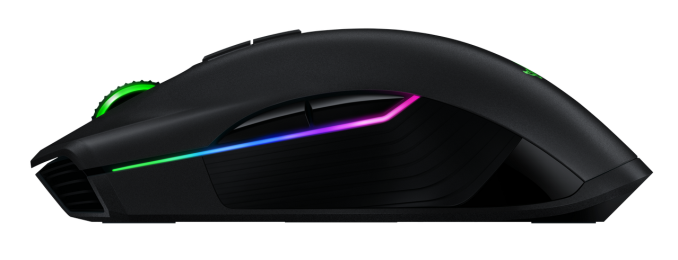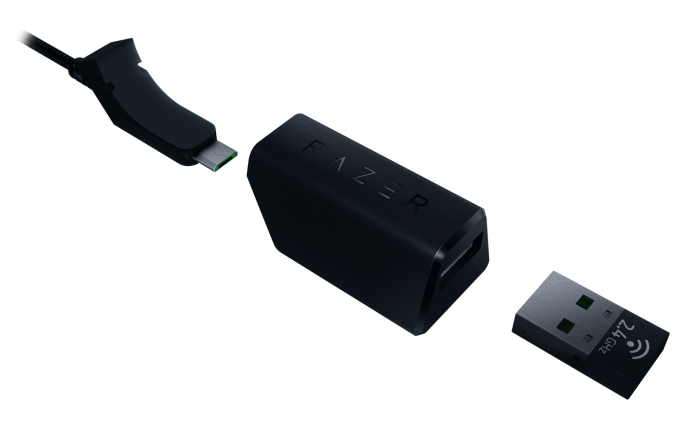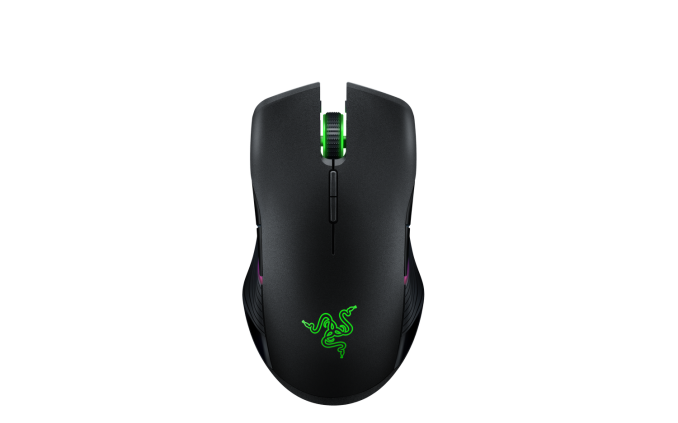Razer Announces The Lancehead Gaming Mice
by Brett Howse on April 27, 2017 11:00 AM EST- Posted in
- Accessories
- Gaming
- Razer
- Mice

Today Razer is launching a pair of gaming mice into their lineup. The Razer Lancehead Wireless Gaming Mouse, and the Razer Lancehead Tournament Edition are the two new models, and perhaps just as interesting is that they are also announcing a new version of their configuration software, dubbed Razer Synapse Pro, which is currently in beta. Both of the new mice feature an ambidextrous body, which should please those who prefer using the mouse with their left hand, and of course both mice support Razer's Chroma lighting.
First up is the Lancehead Wireless Gaming Mouse. Wireless mice have come a long way, but they can still have issues in a group environment due to interference on the frequencies the radios operate at. This has been an ongoing issue since the dawn of time, and there are various methods to combat this. Razer is announcing a new technology in their repertoire to try to assist with these issues, and they are calling it Adaptive Frequency Technology (AFT). None of this is new science of course, since frequency hopping is par for the course, but Razer is advertising their AFT should help with latency by choosing the strongest interference-free channel when it starts, and only hopping when necessary. There’s nothing really unique about doing this, but with good error correction it should help. Razer is claiming that it outperforms every other wireless gaming mouse. Frankly it would be nice to see some of these devices move off of the extremely crowded 2.4 GHz frequency altogether, and with the relatively short distance from a mouse to a PC, it’s strange that they stick with the 2.4 GHz band.
In addition to the wireless component, the Lancehead comes with a 16,000 DPI sensor with 210 inches-per-second tracking and it can handle up to 50 G of acceleration. It also features mechanical mouse switches that Razer co-developed with Omron, and Razer is claiming lower latency on the clicks, as well as up to 50 million clicks of durability.
The second mouse is similar to the first, but ditches the wireless connection for a USB cable. The Razer Lancehead Tournament Edition also supports up to 450 inches-per-second of speed, and the same 16,000 DPI and 50 G acceleration as the wireless model.
Razer is also announcing the new Razer Synapse Pro software, which will be released soon. The Lancehead owners will be the first to get a chance to use the new software. Synapse Pro supports both cloud and on-device storage for mouse settings, which is a welcome change from the existing software, which requires an online account to sync the mouse settings, and do most of the other configuration. The new Synapse Pro will allow a user to access their device profile on any computer without requiring an internet connection. Finally.
Razer will be offering the new mice for pre-order now, with shipments of the Tournament Edition starting in May, and the Lancehead Wireless Gaming Mouse will be available in the May/June timeframe. Pricing starts at $79.99 USD for the wired version, and $139.99 for the wireless model.
Source: Razer













18 Comments
View All Comments
DanNeely - Thursday, April 27, 2017 - link
" Frankly it would be nice to see some of these devices move off of the extremely crowded 2.4 GHz frequency altogether, and with the relatively short distance from a mouse to a PC, it’s strange that they stick with the 2.4 GHz band."I'm not entirely sure I agree. It's unlikely we'll see them drop back down to the emptying out 900MHz (or lower) band. 60GHz is too immature and line of sight dependent. That leaves 5GHz. My fear is that if random low bandwidth devices start migrating to it in mass we'll end up with a repeat of the situation in 2.4GHz where a few mice/bluetooth/etc devices using the smallest channel size available end up making it impossible to get a non-shared channel at the larger sizes wifi networks run at. With only 5 non-overlapping 80MHz channels in the US band (5ghz is a mess in terms of international differences) we're only marginally better off in terms of next generation high speed wifi (802.11ac technically supports up to 160 MHz channels now; but in practice virtually no hardware uses the bigger sizes yet) than we are with 3 20MHz wifi channels at 2.4 GHz.
DanNeely - Thursday, April 27, 2017 - link
In the US the 3.6GHz band would have the advantage of being largely open from competition and not have the directionality problems of 60GHz; but limited hardware availability would probably be worse problem. Also it looks like it's only an open band in the US at present, so it wouldn't be an option for a global model.Diji1 - Thursday, April 27, 2017 - link
You could solve the line of sight issue with a wireless reciever on a cord to position it near the mouse.jordanclock - Thursday, April 27, 2017 - link
Your solution for the drawbacks of wireless mice is to add a wire?HomeworldFound - Thursday, April 27, 2017 - link
Are you aware that some game controller dongles and the Steam controller come with an extension cable and port to increase the range of the dongles?HomeworldFound - Thursday, April 27, 2017 - link
Microsoft's Xbox One controller dongle comes with something too. It's not like you're adding a wire to the mouse you're increasing the effective range of the dongle and removing obstacles, such as the computer case.BrokenCrayons - Thursday, April 27, 2017 - link
The current Razer Synapse software is at the heart of my DeathAdder's problems. When I boot my computer, it often won't find and recognize the mouse. I went through updates and put up with the problem for about 6 weeks. Uninstalling Synapse fixed the problem, but now nothing configurable about the mouse can be changed. It was supposed to be a gift, but it's turned into a pretty looking paperweight over that issue. The hardware was nice, but I just can't get behind a company that can't fix such a trivial problem.Lwerewolf - Thursday, April 27, 2017 - link
Took them some time to release a g900 competitor... Let's see how it'll compare :)namiator - Thursday, April 27, 2017 - link
yeah, and it's also 10$ cheaper than the g900hope that it performs wel
numberlen - Thursday, April 27, 2017 - link
A huge drawback of Razer mice compared to Logitech mice is that most Razer mice don't have on board memory, and you can't use them without installing Razer Synapse. And Synapse requires admin rights, an internet connection, and is generally a piece of shit.Meaning, you can't use them at work, at a friend's place, at LAN, at school, at libraries, and so on. Made worse by the fact that this is a wireless mice that you're supposed be able to carry around with you.